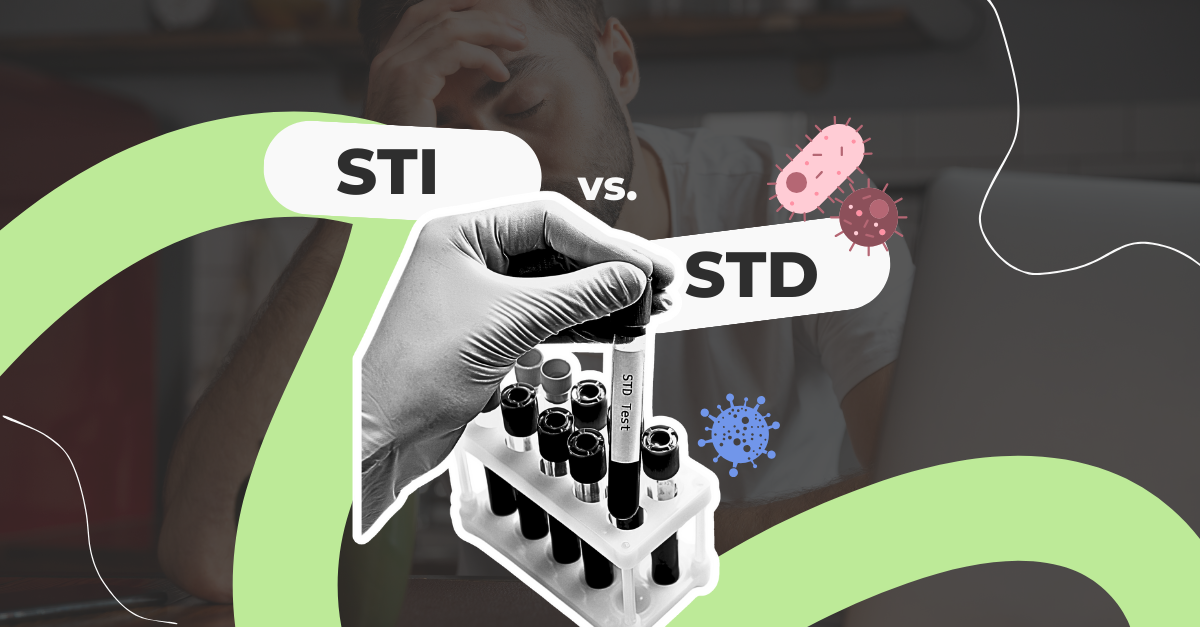Understanding the Concept of a Situationship
To truly grasp the meaning of a situationship, we must first define it. In simple terms, a situationship is a romantic or sexual relationship that lacks clear definitions or labels. It is characterized by emotional ambiguity and a lack of commitment (Verywell, 2022)
Situationships have gained popularity in response to the evolving nature of modern relationships. In an era where casual interactions and non-traditional partnerships are more prevalent, individuals can find themselves caught up in an undefined relationship dynamic.
Defining Situationship
Unlike traditional relationships with clear boundaries, a situationship is often characterized by its lack of definition. Participants may enjoy spending time together, engaging in various activities, and even expressing affection for one another. However, they often refrain from using labels or committing to a long-term partnership (Cleveland Clinic, 2023)
Without clear expectations or commitments, individuals in a situationship may find themselves unsure about the true nature of their connection. This emotional ambiguity can be both exhilarating and frustrating, making situationships a complex territory to navigate.
The Evolution of Modern Relationships
As societal norms shift, so do relationship dynamics. The traditional model of dating and courtship has given way to more fluid and casual arrangements. Factors such as career demands, personal growth, and a desire for independence have contributed to the rise of situationships in recent years.
These relationships allow individuals to explore their options without the pressure of commitment or defined expectations. However, they also come with their fair share of challenges and uncertainties.
One of the key factors driving the evolution of modern relationships is the rise of technology. With the advent of dating apps and social media platforms, meeting new people and forming connections has become easier than ever before (Cadabams, 2024). This increased accessibility has led to a shift in how individuals approach relationships.
In addition to technology, societal attitudes towards relationships have also played a role in the emergence of situationships. The traditional notion of settling down and getting married at a young age is no longer the norm for many individuals. Instead, people are prioritizing personal growth, career advancement, and self-discovery.
In conclusion, situationships have become a prevalent relationship dynamic in today's society. They offer individuals the freedom to explore connections without the pressure of commitment, but they also come with their fair share of uncertainties. Understanding the concept of a situationship and the factors that have contributed to its rise can help individuals navigate this complex territory with greater clarity and self-awareness.
Characteristics of a Situationship
While each situationship is unique, there are some common characteristics that help distinguish it from traditional relationships. It's a chance for personal development. Situationships may teach people how to communicate romantically, which is useful for anyone looking to learn more about dating and relationships in general (Womens Health, 2023)
Understanding these traits can provide insight into the complexities of being in a situationship.
Emotional Ambiguity
One of the defining features of a situationship is the presence of emotional ambiguity. Participants may experience a range of emotions, ranging from affection and intimacy to confusion and insecurity. You’re more than friends, less than lovers, and free from the labels that come with a relationship (Medium, 2024)
The undefined nature of the relationship can leave individuals uncertain about where they stand with their partner, leading to emotional roller coasters.
Without clear boundaries, it can be challenging to establish the level of emotional investment required for a healthy and fulfilling connection. This uncertainty can be both exciting and stressful.
Imagine the scenario: you're spending time with someone you care about, sharing intimate moments and creating memories together. But at the same time, you can't help but wonder if they feel the same way. Are they as emotionally invested as you are? Or are they just enjoying the moment without any long-term intentions? These questions can weigh heavily on your mind, adding a layer of complexity to the already intricate dynamics of a situationship.
Lack of Commitment
Unlike traditional relationships that involve clear commitments, situationships often lack a solid foundation of mutual exclusivity or long-term plans. Participants may enjoy spending time together, engaging in activities, and even experiencing physical intimacy. However, they may also keep their options open and refrain from making any long-term commitments.
While the absence of commitment can sometimes bring a sense of freedom, it can also lead to feelings of insecurity and instability. Individuals may wonder if their partner is truly invested in the relationship or if they are just looking for casual enjoyment without any strings attached (Therapist, 2024).
Picture this: you're enjoying the company of someone you deeply care about, cherishing the moments you spend together. But in the back of your mind, there's a nagging doubt. Will this ever progress into something more meaningful? Or are you both simply enjoying the present without any plans for the future? The lack of commitment in a situationship can leave you questioning the longevity and potential of the connection, adding another layer of complexity to navigate.
Differences Between Situationship and Traditional Relationships
Although there are similarities between situationships and traditional relationships, several key differences set them apart. Understanding these distinctions can help individuals assess their own relationship dynamics and determine if they are in a situationship.
Comparing Emotional Investment
In traditional relationships, emotional investment is often an essential component. Partners in committed relationships invest time, effort, and emotions into building a strong connection. On the other hand, emotional investment may vary in a situationship. Participants may experience deep emotional connections at times, but without the commitment and solidity found in traditional relationships (Psychologs Admin, 2023).
This difference in emotional investment can affect the overall satisfaction and fulfillment experienced within the relationship.
Evaluating Expectations and Boundaries
Another significant difference between situationships and traditional relationships lies in the expectations and boundaries set by the participants. Traditional relationships tend to involve discussions about the future, establishing goals, and setting boundaries. In contrast, situationships often lack these concrete definitions, leading to uncertainty and potential misunderstandings.
Participants in situationships may find themselves questioning their partner's intentions, wondering about their own desires, and struggling to establish clear communication regarding their expectations and boundaries.
The Pros and Cons of Situationships
Like any relationship dynamic, situationships come with their own set of advantages and disadvantages. Understanding these can help individuals navigate the complexities and make informed decisions about their own relationship choices.
Potential Benefits of a Situationship
One of the main advantages of a situationship is the flexibility it offers. Participants can enjoy the benefits of companionship, intimacy, and shared experiences without the pressure of long-term commitment. This can be especially appealing for those who prioritize personal growth, career aspirations, or exploring various dating options (Time, 2023).
Situationships can also provide a sense of freedom and independence, allowing individuals to maintain their individuality and pursue their own interests. They provide a safe space to explore emotions, vulnerabilities, and intimacy without the full weight of a traditional relationship.
Possible Drawbacks of a Situationship
While situationships can be exciting and liberating, they also come with their fair share of drawbacks. The lack of commitment and defined expectations can create feelings of insecurity and uncertainty. Participants may question the true intentions and level of investment their partner has in the relationship (KMATherapy, 2024).
Situationships can also hinder personal growth if they become prolonged without providing clarity or progress. The lack of commitment and direction can leave individuals feeling stuck or unfulfilled, longing for a more substantial connection.
Navigating a Situationship
Communicating effectively and managing expectations are vital when navigating a situationship. Here are some tips to help make the journey smoother:
Communication in a Situationship
Open and honest communication is key to navigating a situationship successfully. Discuss your intentions, desires, and boundaries with your partner. While the conversation may be challenging, it is essential to ensure that both parties are on the same page and have a clear understanding of the relationship's dynamics.
Regular check-ins and open conversations about emotions can also help mitigate misunderstandings and ensure that both individuals feel heard and validated.
How to get over a situationship
If you find yourself wanting more from the relationship or feeling unfulfilled, it may be time to consider transitioning out of the situationship. Having an honest conversation with your partner about your desires and expectations can help clarify the path forward.
Remember, each individual has unique needs and desires. If both parties are not aligned in their expectations, it may be healthier to explore other relationship options that align more closely with your personal goals and aspirations (Theeverygirl, 2023).
In conclusion, a situationship is a unique relationship dynamic that has gained popularity in recent years. Understanding the concept, its characteristics, and the pros and cons associated with it is essential for making informed decisions about your own relationship choices. By communicating effectively and managing expectations, individuals can navigate the complexities of a situationship and ensure their emotional well-being.
Calmara before any situationship!
In today's dynamic dating landscape, navigating situationships can be confusing and hard to understand. Whether you're exploring a casual connection or embarking on a new relationship, understanding each other's sexual health status is crucial for building trust and intimacy.
With Calmara, you can confidently navigate these situations by taking proactive steps towards safeguarding your sexual well-being. Whether you're planning a casual hookup or embarking on a new relationship, Calmara provides a discreet and convenient solution for screening sexually transmitted infections (STIs).
Calmara is a revolutionary web application designed to empower individuals to take control of their sexual health. By utilizing cutting-edge technology that analyzes images, Calmara offers a discreet and convenient solution for screening sexually transmitted infections (STIs). Before engaging in intimate activities with a partner, with the consent of their partner they can simply upload images of their skin or genital areas to the Calmara platform. The advanced algorithms then swiftly identify any potential signs or symptoms of STIs, providing users with valuable insights and peace of mind. With Calmara, individuals can proactively protect themselves and their partners from the risks associated with STIs, ensuring safer and more informed decisions about their sexual health. Before you take that next step, consider using Calmara to prioritize your well-being and foster healthier relationships. Try Calmara now!






